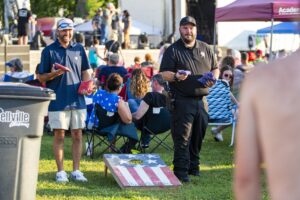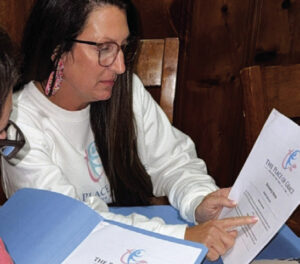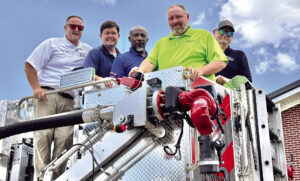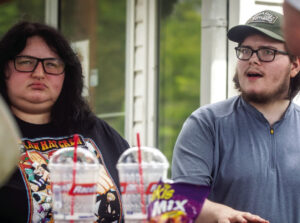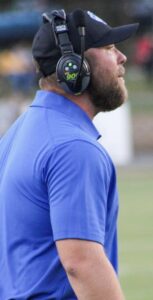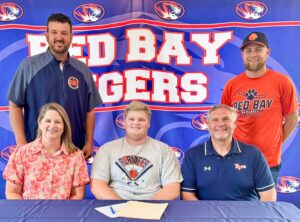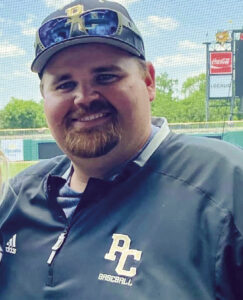Wild animals influences on pioneer survival
By By Otha Barham / outdoors editor
Sept. 6, 2002
People have always had a fascination, if not a fear, of wild animals. Not too many generations ago, many of our ancestors essentially lived with the animals, suffering their predation and at the same time utilizing their meat as an essential element of survival.
Lest anyone forget how important wild game has been to the survival of many people, consider these bits of history from just one corner of northwest Colorado and northeast Utah.
Indians survived in Brown's Park (called Brown's Hole by outlaws) and on Diamond Mountain for thousands of years in large part by hunting game. They even returned to hunt there after having been moved to reservations.
Frank Goodman, born in England, was a member of Major John Wesley Powell's exploration party on the Green River. When one of Powell's boats was lost in the rapids with all of Goodman's possessions on board including his clothes Powell was left with too many men for the remaining boats. Goodman volunteered to stay behind, choosing unknown Indian country over the treacherous river. He left the party with only his shoes and long, red underwear. He married an Indian woman and trapped and fished for a living in the area, eventually settling as a sheep rancher in Brown's Hole until cattlemen drove him and his sheep over into Utah.
Survival food
Doug Chew, patriarch of the Chews who still run sheep in Colorado and Utah, said of his early years at Currant Springs ranch in Brown's Hole (where I took a fine bull elk in 2000), "Sometimes I get to wonderin' just what we ate. I guess we lived mostly on deer. Often if you didn't catch a rabbit or a fish, supper was mighty lean. We knew what it was to go to bed hungry." Their father would go to Rock Springs, Wyoming twice a year in the wagon and bring back "flour, sugar, raisins, honey and salt." Most meat had to come from game animals.
Sam Spicer, an early cattleman in Brown's Hole, told of buying several deer skins from the Ute Indians in the 1800's and sewing trousers and a shirt from them. Spicer was the man who took a long range shot with "my Winchester"at some men who were stealing his horses in 1885 or 1886. Perhaps he was wearing his deerskin pants at the time. Later he learned that he had hit one of the men, Bert Revell, in the thigh. Before Revell died several days later, he confessed to stealing Spicer's horses.
Charlie Sparks came to Brown's Park from North Carolina and noticed there were very few elk in the area. He hired Ollie Preece, a stage driver, to haul elk in freight wagons from Jackson Hole, Wyoming to his fenced ranch. He increased the elk herd to some 200 head and then turned them loose on the range and on Cold Spring Mountain. One of Colorado's finest elk herds exists there today, descendants of the Charlie Sparks herd. My 2000 bull likely carried that blood.
Deer was a staple in the outlaw camps in Brown's Hole. Without venison, the Wild Bunch and other outlaw gangs would have had to hide elsewhere. An interesting true story refutes a widely held belief that Butch Cassidy died in South America in the early 1920s. David Tolliver, an outlaw in Brown's Hole, once traded a horse to Butch Cassidy there for another horse and five dollars. Years later, in the1920's, Tolliver saw an older man in a Wyoming saloon who noticed him and at once he knew the man was Butch Cassidy. "If you ever saw Butch's eyes you'd know those eyes anywhere," he later told his daughter, Wilma.
Trade recalled
Tolliver recalled, "The older fellow looked at me and said, How did the pony turn out I traded to you?' I said to Butch, "I thought you was dead and buried in South America." Butch looked at me and said, "I am." When Tolliver got that answer, he knew he was to move on and say no more.
Many people who knew Cassidy saw him in various places around northwest Colorado after he had been reported dead. Several wrote of the sightings in diaries they never thought would address the controversy about his death. One witness visited him in Nevada in 1928 where he likely lived until he died in 1937. Another recorded an encounter in 1930. Butch Cassidy stories would not likely exist around Brown's Park had it not been for the wild game that kept his kind hiding out there and that kept the early settlers in enough meat to survive.
Wild animals, the meat they provided and the lore they fostered, were a large part of life in the times when our land was being settled and our country's future was being shaped.


